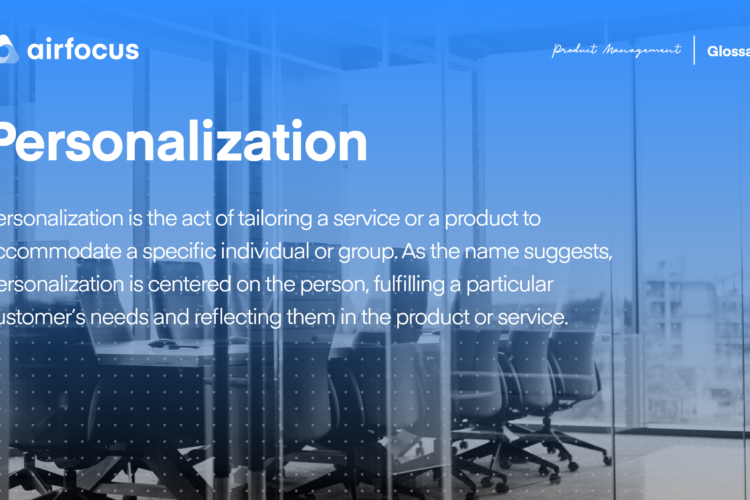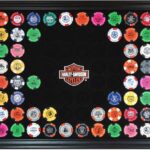
I. Importance of Personalization in Marketing
II. Strategies for Implementing Personalization
III. Benefits of Personalization for Businesses
IV. Examples of Successful Personalization Campaigns
The Importance of Personalization in Marketing
Hey there, marketing enthusiasts! Today, let’s dive into the wonderful world of personalization in marketing and why it’s so crucial for businesses to incorporate this strategy into their campaigns.
Imagine walking into your favorite coffee shop and the barista already knows your order before you even say a word. How does that make you feel? Pretty special, right? Well, that’s the power of personalization in marketing – making your customers feel valued and understood.
Personalization goes beyond just using your customer’s name in an email – it’s about tailoring your content, products, and messages to meet the specific needs and preferences of each individual. In today’s cluttered digital landscape, consumers are bombarded with generic ads and emails every day. Personalization allows you to cut through the noise and create a meaningful connection with your audience.
By personalizing your marketing efforts, you can enhance the overall customer experience, improve brand loyalty, and drive higher engagement and conversions. According to a study by Epsilon, 80% of consumers are more likely to do business with a company if it offers personalized experiences.
Now, you might be thinking, “But how do I even begin to incorporate personalization into my marketing strategy?” Don’t worry, I’ve got you covered. In the next section, we’ll explore some effective strategies for implementing personalization that will help take your marketing game to the next level.
Strategies for Implementing Personalization
Personalization is key in marketing these days. It’s all about making your customers feel special and valued, and showing them that you understand their needs and preferences. So, how can you go about implementing personalization in your marketing efforts? Here are some strategies to get you started:
1. Collect and Analyze Data
The first step in personalization is collecting data about your customers. This could include their browsing habits, purchase history, demographic information, and more. Once you have this data, analyze it to identify patterns and insights that can help you tailor your marketing messages to individual customers.
2. Segment Your Audience
Not all your customers are the same, so it’s important to segment your audience based on factors like age, location, interests, and buying behavior. This will allow you to create targeted campaigns that are more likely to resonate with each group.
3. Use Personalized Emails
Email marketing is a powerful tool for personalization. Use your customer data to send personalized emails that address each recipient by name, recommend products based on their past purchases, and provide tailored offers and promotions.
4. Customize Your Website
When a customer visits your website, you want to make sure they feel like you’re speaking directly to them. Customize their experience by displaying relevant products, showing personalized recommendations, and using dynamic content based on their browsing history.
5. Leverage Automation
Automation tools can help you streamline your personalization efforts. Set up triggers and workflows that automatically send personalized messages to customers based on their actions, such as abandoning a cart or signing up for your newsletter.
6. Implement Retargeting
Retargeting is a powerful strategy for reaching customers who have already engaged with your brand. Use cookies to track their online behavior and deliver personalized ads that remind them of products they viewed or abandoned in their shopping cart.
7. Provide Excellent Customer Service
Personalization isn’t just about marketing – it’s also about customer service. Train your team to address customers by name, remember their preferences, and provide personalized recommendations to enhance their shopping experience.
8. Monitor and Adjust
Finally, don’t forget to monitor the performance of your personalization efforts. Track metrics like open rates, click-through rates, and conversion rates to see what’s working and what’s not. Use this data to adjust your strategies and continue improving your personalized marketing campaigns.
Personalization is a powerful tool for building customer loyalty and driving sales. By implementing these strategies in your marketing efforts, you can create a more personalized and engaging experience for your customers, leading to long-term relationships and business success. Start personalizing today and see the impact it can have on your bottom line!
“`html
Personalization is key in marketing these days. It’s all about making your customers feel special and valued, and showing them that you understand their needs and preferences. So, how can you go about implementing personalization in your marketing efforts? Here are some strategies to get you started:
- Collect and Analyze Data: The first step in personalization is collecting data about your customers. This could include their browsing habits, purchase history, demographic information, and more. Once you have this data, analyze it to identify patterns and insights that can help you tailor your marketing messages to individual customers.
- Segment Your Audience: Not all your customers are the same, so it’s important to segment your audience based on factors like age, location, interests, and buying behavior. This will allow you to create targeted campaigns that are more likely to resonate with each group.
- Use Personalized Emails: Email marketing is a powerful tool for personalization. Use your customer data to send personalized emails that address each recipient by name, recommend products based on their past purchases, and provide tailored offers and promotions.
- Customize Your Website: When a customer visits your website, you want to make sure they feel like you’re speaking directly to them. Customize their experience by displaying relevant products, showing personalized recommendations, and using dynamic content based on their browsing history.
- Leverage Automation: Automation tools can help you streamline your personalization efforts. Set up triggers and workflows that automatically send personalized messages to customers based on their actions, such as abandoning a cart or signing up for your newsletter.
- Implement Retargeting: Retargeting is a powerful strategy for reaching customers who have already engaged with your brand. Use cookies to track their online behavior and deliver personalized ads that remind them of products they viewed or abandoned in their shopping cart.
- Provide Excellent Customer Service: Personalization isn’t just about marketing – it’s also about customer service. Train your team to address customers by name, remember their preferences, and provide personalized recommendations to enhance their shopping experience.
- Monitor and Adjust: Finally, don’t forget to monitor the performance of your personalization efforts. Track metrics like open rates, click-through rates, and conversion rates to see what’s working and what’s not. Use this data to adjust your strategies and continue improving your personalized marketing campaigns.
Personalization is a powerful tool for building customer loyalty and driving sales. By implementing these strategies in your marketing efforts, you can create a more personalized and engaging experience for your customers, leading to long-term relationships and business success. Start personalizing today and see the impact it can have on your bottom line!
“`
Benefits of Personalization for Businesses
Personalization is not just a buzzword in the world of marketing; it’s a powerful tool that can greatly benefit businesses of all sizes. Let’s explore some of the key advantages that come with implementing personalized marketing strategies:
1. Improved Customer Engagement
By personalizing your marketing efforts, you can create a deeper connection with your customers. When you tailor your messages and offers to their specific needs and preferences, they are more likely to engage with your brand. This leads to increased loyalty and repeat business.
2. Increased Conversions
Personalized marketing has been shown to drive higher conversion rates. When customers receive personalized recommendations and content that resonate with them, they are more likely to make a purchase. This can result in a significant boost in sales and revenue for your business.
3. Enhanced Customer Satisfaction
Personalization shows your customers that you understand and care about their individual needs. By providing them with relevant and timely information, you can improve their overall shopping experience. This can lead to higher levels of customer satisfaction and positive word-of-mouth referrals.
4. Data-Driven Insights
Personalization allows you to collect valuable data on your customers’ preferences, behaviors, and purchasing patterns. By analyzing this data, you can gain valuable insights into what drives your customers’ decisions and tailor your marketing strategies accordingly. This data-driven approach can help you make informed decisions and optimize your campaigns for better results.
5. Competitive Advantage
In today’s competitive marketplace, personalized marketing can give you a significant edge over your competitors. By delivering a more personalized and relevant experience to your customers, you can stand out from the crowd and attract more attention to your brand. This can help you differentiate yourself and build a strong and loyal customer base.
Overall, personalization is a powerful tool that can help businesses improve customer engagement, drive conversions, enhance customer satisfaction, gain valuable insights, and gain a competitive advantage in the market. By taking a personalized approach to your marketing efforts, you can create a more meaningful and impactful experience for your customers, leading to long-term success for your business.
Examples of Successful Personalization Campaigns
Personalization in marketing is not just a trend, it’s a proven strategy that can yield significant results for businesses. Let’s take a look at some successful examples of companies that have effectively implemented personalization in their marketing campaigns:
1. Amazon:
- Amazon is a prime example of a company that excels at personalization. Their recommendation engine uses data such as past purchases, browsing history, and demographic information to suggest products that customers are likely to be interested in. This not only enhances the shopping experience for customers but also increases sales and customer loyalty.
2. Spotify:
- Spotify’s personalized playlists, such as Discover Weekly and Release Radar, have been hugely successful in engaging users and keeping them coming back to the platform. By leveraging data on users’ listening habits, Spotify is able to curate playlists that are tailored to each individual’s tastes, creating a more personalized music experience.
3. Netflix:
- Netflix uses personalization to recommend movies and TV shows to users based on their viewing history and ratings. This not only helps users discover new content that they are likely to enjoy but also keeps them engaged and coming back for more. By personalizing the user experience, Netflix has been able to retain customers and drive growth.
4. Starbucks:
- Starbucks’ mobile app allows customers to customize their drinks and earn rewards based on their purchases. By personalizing offers and promotions, Starbucks is able to drive customer loyalty and increase sales. The app also uses data to suggest new products that customers may like, further enhancing the personalized experience.
5. Nike:
- Nike’s personalized marketing campaigns, such as their NikeID platform, allow customers to customize and personalize their products. By giving customers the ability to design their own shoes and apparel, Nike creates a unique and personalized shopping experience that resonates with consumers. This customization not only drives sales but also fosters brand loyalty and engagement.
In conclusion, these examples demonstrate the power of personalization in marketing and how it can drive engagement, loyalty, and sales for businesses. By leveraging data and technology to create personalized experiences for customers, companies can build stronger relationships with their audience and stand out in a crowded marketplace. So, if you’re looking to take your marketing efforts to the next level, consider incorporating personalization into your strategy and see the positive impact it can have on your business.










Comments